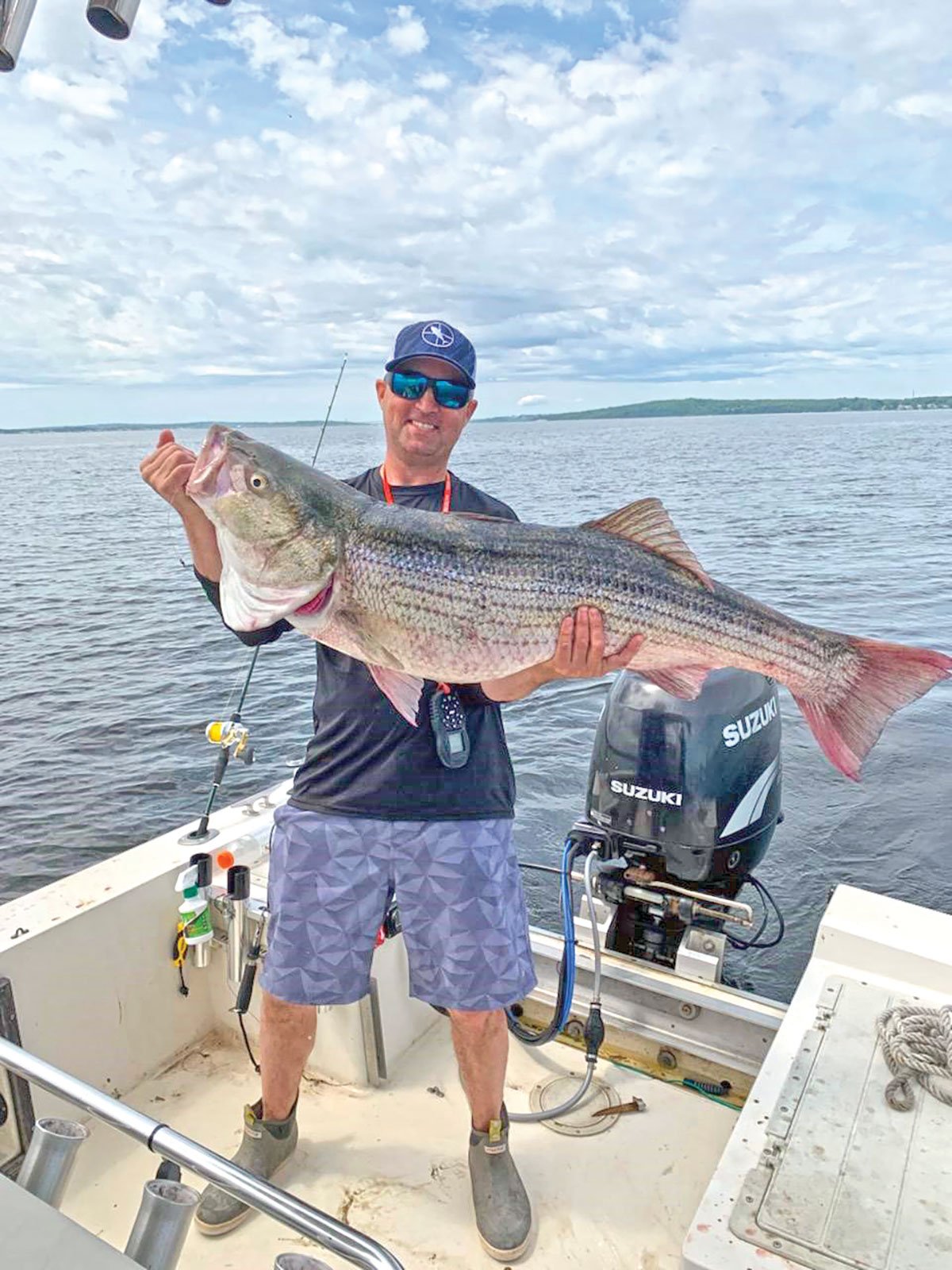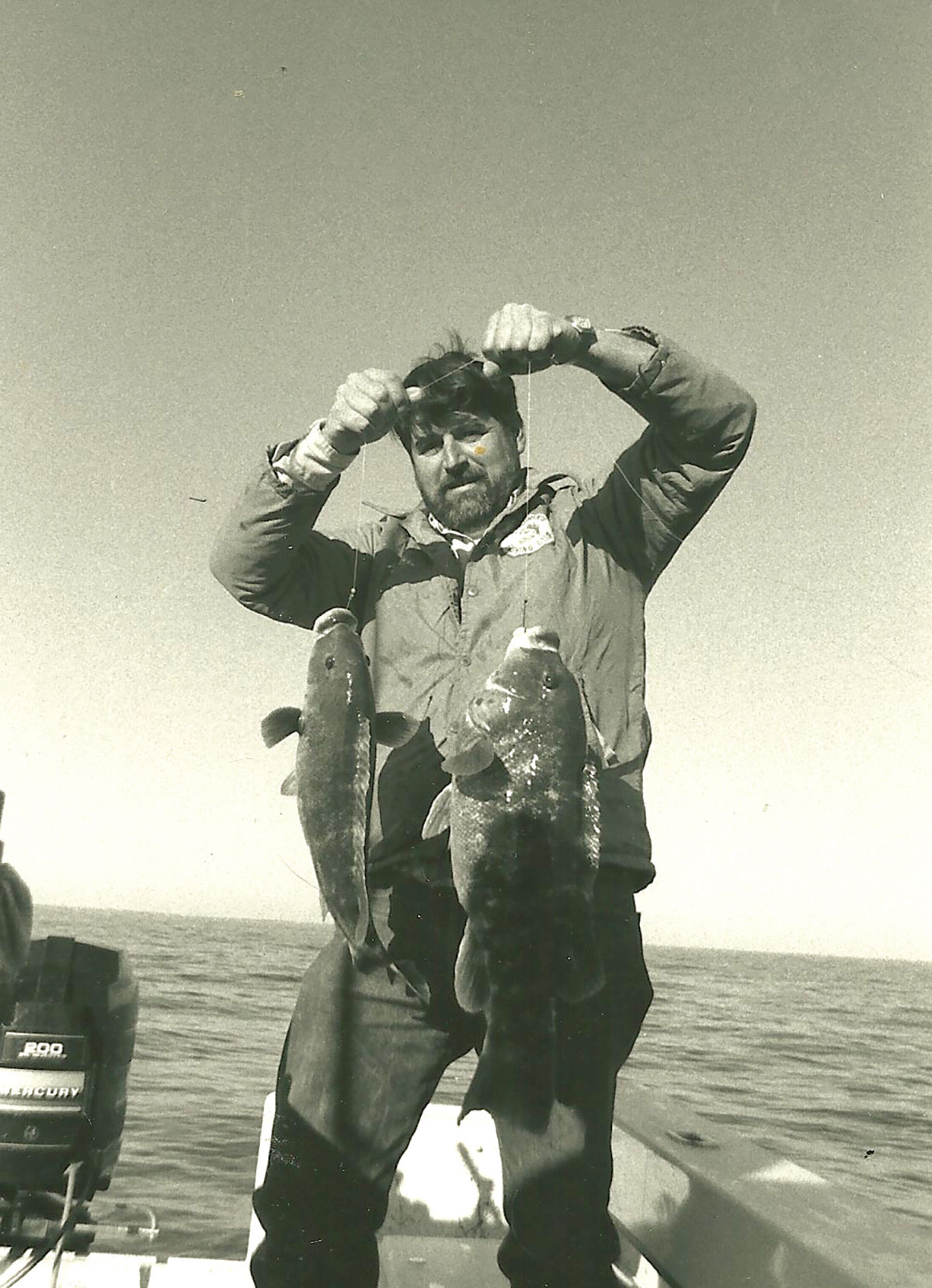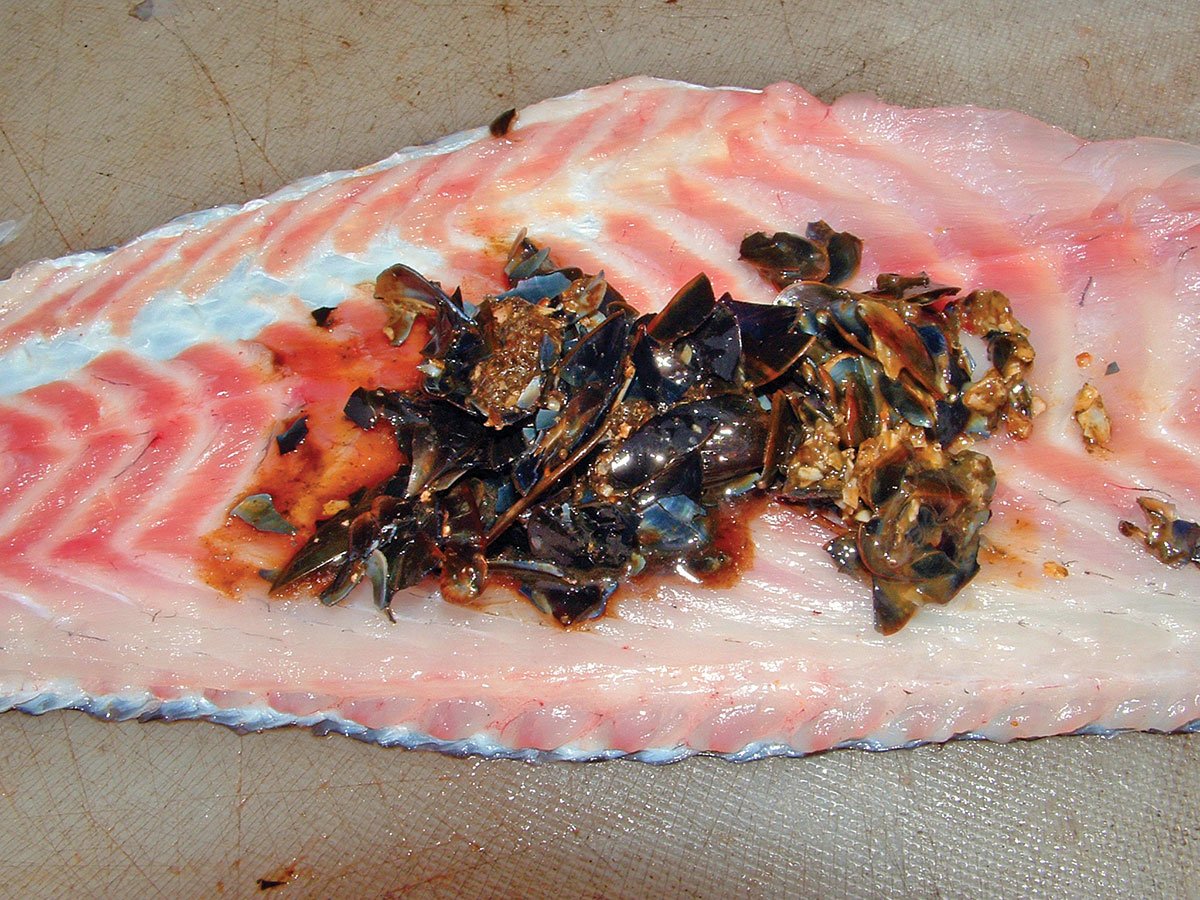
The fall run is more than just stripers; make the most of it and plan for multiple species when you leave the dock.
She finally breathed a sigh of relief as the clear, tightly-sealed Tupperware container that had been taking up valuable space in her refrigerator for the past two weeks was finally where it belonged: on ice in the big Engel cooler on the boat. She claimed they were beginning to smell, yet even toward the end of their lengthy storage they had never given off so much as a whiff.

Reports from most of my reporting station sources indicated that most if not all of the larger stripers had already moved through during the last two line storms, which was the reason the worms were stored for so long. Two days prior to this trip I purchased two gallons of green crabs, intending to fish for tautog, along with a quart of fresh-frozen sea clam tongues. I always prefer to fish before a front moves through, but in the fall we take what we can get and are thankful for a relatively comfortable day on the water. The cooler was packed with ice, and my chum blocks were thawing on deck as we made good time out of Sakonnet Harbor, running through large patches of weed stirred up by the storm.
My destination was a seldom-visited section of broken bottom southwest of the harbor, far enough offshore that lazy, look-around anglers would not venture out to it, but with a few dozen worms and a desire for a skirmish with a few last stripers before I racked up my bass gear I detoured over a few other shallow ledges where I’ve always found a few late-season stripers. The best of them were so covered with weed we didn’t bother to put the tubes out, but a prominent ridge under 35 feet of water was fairly clean.
We baited our tubes with the still-quite-lively worms and payed out five colors of lead line. Our first pass produced a pair of identical 22-inch class schoolies that fought much bigger than their size. The second pass produced another bass of the same size for Mike while a much bigger fish crashed my tube and ripped off 30 yards of backing before coming unbuttoned. It appeared that not all the stripers had headed west. We selected two of the biggest worms in the box, but this time I turned and made a different pass that would bring the tubes over the crest then dropping on the down tide side of the current.
I had just locked my reel when my deck mate let out a “Whoa!” and jammed his thumb on the spool. A much bigger striper had slammed his tube and spun him around before he had locked the reel leaving him a thumb burn to prove it. A few minutes later I rolled the fish over the rail and onto the deck.
We began our bottom fishing trip by putting a hefty striper in the cooler, and we were still over a mile from our intended destination. Call it luck if you will, but I’ve been catching stripers right up until the weekend after Thanksgiving and it’s no special feat. After one more schoolie, and not another tap, we headed for our original destination. There was a time when we arrived at selected hot spots using nothing more than shore ranges and a sounding lead, or in my case a home-built red flasher unit (Apelco) that read bottom depth. The old-timers taught me how to take and use ranges, and it is a skill I use to this day.
One of the most important lessons I took away from fishing with those tarred line, hook and sinker sages was about the legacy of bottom fish, particularly tautog. I am still fishing most of the same locations we fished over 50 years ago, and the tog return to this same bottom, which, according to Bob Pond, they will do so long as their genetic memory is operational.

Without the benefit of tagging we could not identify a specific fish other than one big white chinner whose life was first spared by Tommy Togger. That fish had what we referred to as a necklace around its gills. When he first caught it there were scars from the mono net and a long tear from his left gill plate over his dorsal fin. I only saw that fish once, but the old-timers made a big deal of catching that same tog almost every year since Tommy released it; one gent estimated that it was at least 22 inches the last time he sent it back. Tautog are a species with a very slow growth rate, and with a fairly universal 16-inch minimum but diverse regulations that can become confusing. I understand these regulations are designed to help to rebuild the stocks, but if we just released all the big roe-laden females we would be doing a lot more than closing the fishery all together, as Rhode Island does from June 1 to July 31. Also, the extended season up until the last day of December is generous yet futile as all but a few large party boats are still fishing as most, if not all recreational boats, have been winterized and off the water after the Thanksgiving holiday weekend. So much for fishery politics.
If you are serious about catching more and bigger tautog you should definitely consider using a chum pot to lure the fish under your boat. Most successful tog fishermen know that tog are very spot-specific, and at times the anglers on the port side or bow may not get a bite while the others fishing from the stern or starboard rail are catching all the fish. A big chum pot, set off the bow and filled with crushed mussels, quahogs or ground sea clams will draw those fish right up under your stern.
One of my favorite bottom fishing partners was “Three Hook Mike,” a moniker assigned to him by Tim Coleman. On the day of that initiation I had finally located the wreck of the Seaconnet (not a misspelling) but a ripping current prevented us from holding over her for more than a few seconds before we were swept away. I powered up and beyond while Mike dropped his line as I kept the engine in gear to stem the tide while Mike got a few bounces in the strike zone. He reared back with an authoritative set, and by the arc in his rod and the line peeling from the tight drag we assumed he had hooked a striper. A few minutes later we first saw color but could not make out what he had until Tim called for the big fluke net.
When I leaned over the rail I was looking at two, then three big tautog, all over five pounds solidly hooked in their thick leather lips and all pulling in opposite directions. With a great deal of luck, I was able to surround all three in the big Frabill hoop before my partners lifted the trio over the rail. Three more drifts in the strengthening currents only resulted in the wreck eating four of Mike’s bottom rigs. In the span of 15 minutes Mike had his first triple-header and a nickname that has stuck with him to this very day.
Whenever Three Hook and I fish together he brings along his dad’s rod. It’s a solid glass, green rod that would be more at home in a billiard parlor than in a rodholder, but I was always happy to welcome dad’s tackle along with us. That short, stubby stick had an old Penn 500 filled with linen line to which Mike attached one of the many big single Kirby hook rigs his dad crafted with tarred line. My friend would pick out the largest green crabs, crack the shell to allow the juices to bleed out and put the rod in the stern holder as the boat swung at anchor. That unattended antique seldom caught many, but it usually snagged the biggest which provided my friend a deep sense of satisfaction.
This fall, because of the way the states have adjusted their regulations, we will be doing most of our bottom fishing in Rhode Island waters where after October 15 we will be able to take a 5-fish limit of tog (no more than 10 tog per boat) along with the bonus of black sea bass because the black sea bass season in Massachusetts closed back on September 8. Remember you cannot leave a Massachusetts harbor to fish Rhode Island waters and return to Massachusetts waters with black sea bass when the season is closed there. We will be launching out of Newport or Sakonnet and landing our catch back in those same Rhode Island ports.
Green crabs usually become scarce at the end of the season so I would suggest you find a place to hold them like a crate submerged in saltwater. Three hook rigs might be okay for guys like Mike, but I am fishing for one huge tog at a time and will be using a heavy single-hook rig to avoid hangs when the big fish digs for the safety of broken bottom. As the seasons change there are fewer boats and less competition for preferred bottom, and I have fond memories of some bluebird days bottom fishing into late October and early November when we owned the ocean.




